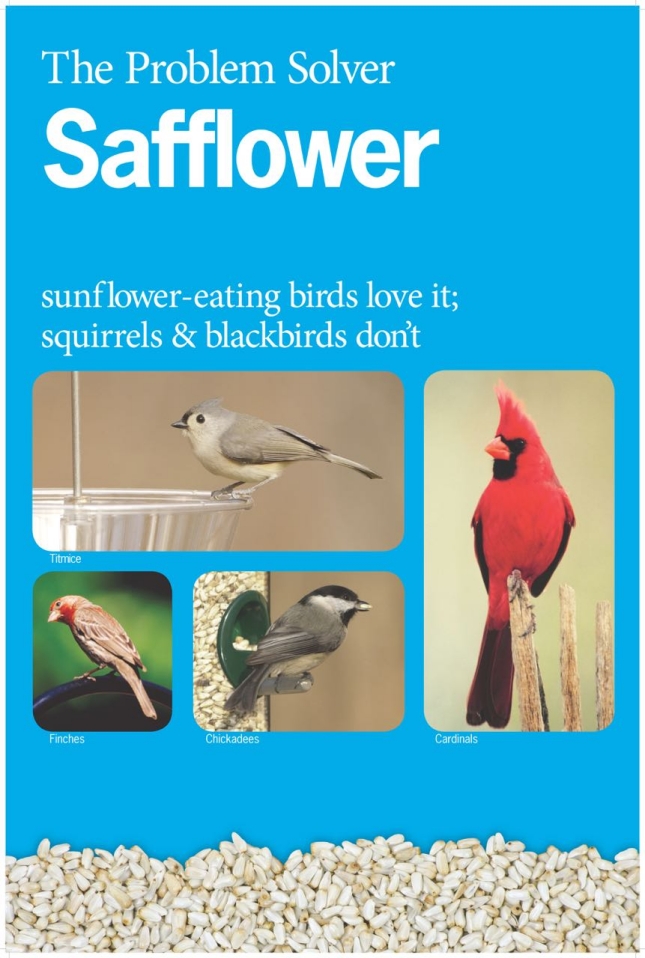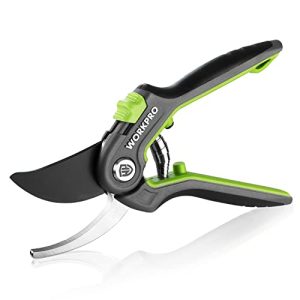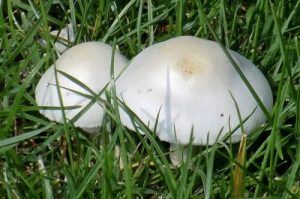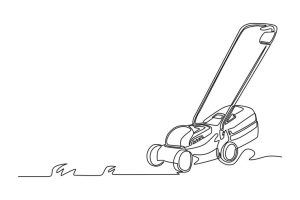Are you frustrated with starlings taking over your bird feeder? These aggressive birds can quickly drive away the feathered friends you love to watch, leaving you with a feeder devoid of the vibrant variety you cherish.
You’re not alone in this struggle. Many bird enthusiasts face the same challenge, and the solution might be simpler than you think. Imagine your garden filled once more with the delightful songs and colors of diverse bird species. You’ll discover effective strategies to keep starlings at bay, ensuring your bird feeder becomes a welcoming haven for the birds you truly want to attract.
Keep reading, and transform your backyard into the avian oasis you’ve always desired.

Understanding Starling Behavior
Starlings often dominate bird feeders, leaving little for other birds. Try using feeders with smaller perches or cages. Offering food less appealing to starlings, like safflower seeds, can help deter them effectively.
Understanding starling behavior is key to keeping them away from bird feeders. These clever birds can become a nuisance, outcompeting smaller birds for food. With their aggressive nature, they tend to dominate feeders, making it essential to learn their habits.Recognizing Starling Feeding Patterns
Starlings feed in large groups, creating chaos at bird feeders. They prefer open spaces where they can easily spot food sources. Their feeding frenzy can empty feeders rapidly, leaving little for other birds.Starling Adaptability And Intelligence
Starlings are highly adaptable and intelligent. They can quickly learn the best food sources and adapt to obstacles. Their cleverness makes them persistent visitors, challenging to deter.Seasonal Starling Behavior
Seasonal changes impact starling behavior significantly. In winter, their need for food increases, leading them to bird feeders more often. Understanding this pattern helps in planning effective deterrents.Communication And Social Structure
Starlings communicate using a range of sounds and calls. They have a strong social structure, moving in flocks that signal food availability. Their communication skills help them locate feeders swiftly. Understanding these behaviors aids in creating effective strategies. By knowing how starlings operate, you can protect your feeders from their domination.Choosing The Right Bird Feeder
Choosing the right bird feeder can make all the difference in keeping starlings away from your backyard buffet. While these birds are fascinating to watch, they can often dominate feeders, leaving little for other feathered friends. By selecting the appropriate feeder, you can create an inviting environment for a variety of birds while gently discouraging starlings.
Types Of Feeders
Not all bird feeders are created equal. To keep starlings at bay, consider tube feeders. These feeders have small perches that make it challenging for larger birds like starlings to balance.
Another great option is cage feeders. These feeders are surrounded by a metal cage that allows small birds to access the food while keeping larger ones out. I once switched to a cage feeder and noticed a dramatic increase in visits from finches and chickadees.
Have you thought about platform feeders? They’re often the culprit when starlings take over. If you love using them, try placing them away from other feeders to limit the starlings’ access.
Feeder Placement
Where you place your feeder is just as important as the type. Keep feeders close to cover like trees or bushes. This gives smaller birds a quick escape route from starlings.
Try hanging feeders high or in tricky spots. Starlings prefer easy access, so make them work for it. I once hung a feeder under an awning, and it helped reduce starling visits.
Have you considered using multiple feeders? Spread them around your yard to dilute the starlings’ presence. This way, other birds can enjoy their meals without too much competition.
By thoughtfully choosing and placing your bird feeders, you can enjoy a vibrant mix of feathered visitors while keeping starlings from monopolizing the feast. What changes will you make to welcome more diverse wildlife to your garden?
Selecting Birdseed Wisely
Choosing the right birdseed helps deter starlings from your feeder. Opt for seeds like safflower, which starlings dislike. Smaller seeds attract preferred birds, while keeping starlings away.
Choosing the right birdseed can make all the difference in your quest to keep starlings away from your bird feeder. These clever birds can be persistent, but selecting birdseed wisely is a practical strategy that can make your feeder less appealing to them. By understanding which seeds starlings dislike, you can create a more inviting environment for your preferred feathered visitors.Starling-resistant Seeds
Have you ever watched in frustration as starlings devour everything you’ve put out for other birds? The key is to choose seeds they find unappealing. Consider offering safflower seeds, as starlings generally avoid them due to their bitter taste. Nyjer seeds are another excellent choice. They’re favored by finches but tend to be ignored by starlings. You might notice fewer starlings at your feeder when you switch to these seeds.Blend Options
If you’re looking for variety, seed blends can be effective too. Mix safflower seeds with nyjer seeds to create a custom blend that attracts a wide array of smaller birds. This combination not only appeals to your favorite bird species but also keeps starlings at bay. You might also try adding cracked corn to the mix. While sparrows and doves enjoy it, starlings are often uninterested. A blend with these components can make your feeder a starling-free zone. Selecting birdseed wisely doesn’t just protect your feeder from starlings—it creates a welcoming space for the birds you cherish. What changes will you make to your birdseed selection to enjoy a more peaceful birdwatching experience?
Feeder Modifications
Modify your bird feeder to keep starlings away effectively. Choose feeders with smaller perches and seed openings. This design favors smaller birds, making it challenging for larger starlings to access food.
To keep starlings away from your bird feeder, consider feeder modifications. These adjustments can deter starlings while welcoming other birds. Tweaking your feeder design can make a noticeable difference. Let’s explore some effective modifications.Adding Baffles
Baffles can prevent starlings from accessing your feeder. Install a baffle above and below the feeder. This creates a barrier that starlings struggle to overcome. Use smooth, slippery material for the baffle. A dome-shaped baffle works well. Secure it tightly to maintain effectiveness. This simple addition can significantly reduce starling visits.Mesh Or Caged Feeders
Mesh or caged feeders limit access to larger birds. Starlings find it difficult to reach the food inside. Small birds can easily access the seeds through the mesh. Choose a feeder with sturdy metal construction. This ensures durability and long-lasting protection. Caged feeders offer a safe haven for smaller birds. They enjoy their meal without starling interference.Strategic Feeder Placement
Strategic feeder placement plays a crucial role in deterring starlings. These clever birds can dominate your bird feeder, leaving little for other species. By carefully considering where to place your feeder, you can minimize starling visits and maximize enjoyment.
Height Considerations
Position the feeder at least six feet above the ground. This height makes it harder for starlings to access. Many small birds prefer feeders at elevated levels. Adjust the height based on your yard’s landscape. Consider obstacles like fences or trees. These can influence the feeder’s accessibility.
Distance From Cover
Place feeders away from dense foliage. Starlings use bushes and trees for cover. Keep a distance of at least ten feet from such areas. Open spaces deter starlings by exposing them to predators. This setup encourages smaller birds to visit safely. Clear sightlines improve bird watching and photography.
Creating An Unattractive Environment
Creating an unattractive environment can deter starlings from bird feeders. These birds are clever and persistent. But certain strategies can make your yard less appealing to them. By using noise, movement, and other natural deterrents, you can protect your bird feeder. This way, you ensure only desired birds visit your garden.
Noise And Movement Deterrents
Noise scares starlings away. Wind chimes create unpredictable sounds. This can confuse and repel them. Reflective materials also work well. Hanging CDs or aluminum strips adds movement. The light reflections create an unsettling environment. Starlings prefer quiet, stable areas. So, keep your yard lively and dynamic.
Natural Predators
Natural predators help maintain bird populations. Owls and hawks are excellent deterrents. Install decoy statues in your garden. They mimic the presence of real predators. Starlings will avoid areas they perceive as dangerous. You can also encourage real predators. Plant native trees and shrubs. These attract predatory birds. With time, they will visit your yard more often.
Alternative Feeding Stations
Starlings can dominate bird feeders, leaving little for other birds. Install alternative feeding stations to distract them. Choose feeders with smaller openings that exclude starlings, allowing smaller birds to eat peacefully. Adjust food types to discourage starlings while attracting a variety of other birds.
Attracting a variety of birds to your backyard can be a delightful experience. However, starlings can often dominate your bird feeders, leaving little for other species. One effective way to manage this issue is by setting up alternative feeding stations. This strategy not only helps in distributing the bird traffic but also keeps those pesky starlings at bay. But how do you set up these stations effectively?Decoy Feeders
Decoy feeders can be a great solution. Place a separate feeder filled with food that starlings love, such as cracked corn or peanuts. This will draw them away from the main feeder. I once tried this in my own backyard, and the results were immediate. The starlings flocked to the decoy, leaving the main feeder free for cardinals and finches. Consider hanging the decoy feeder at a lower height or in a slightly different area. This subtle change can make a big difference in redirecting their attention.Seasonal Adjustments
Seasons affect bird feeding habits. Adjust the type of food in your feeders based on the time of year to keep starlings away. In winter, opt for suet with hot pepper. Starlings dislike the spiciness, while other birds are unbothered. During spring and summer, switch to safflower seeds as starlings find them unappealing. Have you ever noticed how certain birds vanish in different seasons? This is your cue to change the offerings. By tweaking the menu, you can naturally control which birds visit your feeders. Creating alternative feeding stations requires a bit of trial and error. However, with patience and some strategic planning, you’ll soon enjoy a diverse and balanced bird population in your yard. What changes will you make to create a more inviting space for your feathered friends?Maintaining A Clean Feeding Area
Discouraging starlings from visiting your bird feeder involves using feeders with smaller perches and adding safflower seeds. These birds prefer larger seeds and open spaces, so altering your feeder setup can help maintain a clean feeding area. Keeping the area tidy and removing leftover food also reduces their visits.
Maintaining a clean feeding area is key to discouraging starlings from your bird feeder. These birds are less likely to stay in tidy environments. A clean area promotes healthy feeding for your desired birds. It also prevents diseases and pests.Regular Cleaning
Regular cleaning keeps your bird feeder inviting for smaller birds. Use warm water and mild soap weekly. Scrub thoroughly to remove dirt and grime. Rinse well to ensure no soap residue remains. Dry the feeder completely before refilling. This prevents mold and bacteria growth.Removing Spilled Seeds
Spilled seeds attract starlings. Sweep or rake under the feeder daily. Dispose of seeds in a trash bin, away from the feeder. This keeps the area neat and less appealing to unwanted birds. Consider placing a tray under the feeder to catch spills. A clean feeding area means fewer starlings.:max_bytes(150000):strip_icc()/Discouraging-Starlings-In-Your-Yard-386426-V1-5f02392384db46939e8c786f1f798800.png)
Frequently Asked Questions
How Do I Keep Starlings Off My Bird Feeder?
Use a feeder with smaller perches or weight-activated mechanisms to deter starlings. Install cages around feeders. Offer safflower seeds or nyjer, as starlings dislike them. Keep feeding areas clean to reduce attraction. Consider using a separate feeder for larger birds.
What Is The Best Deterrent For Starlings?
Install bird spikes or netting to deter starlings. Use reflective tape or predator decoys for additional protection. Keep food sources like bird feeders secure and clean up spilled seeds. Regularly change deterrents to maintain their effectiveness.
How To Make Bird Feeders Starling Proof?
Use a feeder with a cage design to block starlings. Install a weight-sensitive perch to deter heavier birds. Choose feeders with small openings, suitable for smaller birds. Consider upside-down suet feeders, as starlings struggle to hang upside down. Regularly clean and maintain feeders to ensure effectiveness.
What Is The 5 7 9 Rule For Bird Feeders?
The 5-7-9 rule for bird feeders suggests spacing feeders 5 feet apart, placing them 7 feet off the ground, and ensuring they are 9 feet from any cover. This setup helps prevent predators, allows safe access for birds, and reduces competition, providing a safe and enjoyable feeding environment.
Conclusion
Keeping starlings away from your bird feeder is achievable. Use feeders designed for smaller birds. Offer food that starlings dislike, like safflower seeds. Hang feeders in sheltered areas. Try using noise deterrents to scare them off. Regularly clean the area to avoid attracting them.
Patience is key. Sometimes, it takes time to find what works best. Enjoy watching your favorite birds visit. With these steps, you’ll see fewer starlings and more of the birds you love. Happy birdwatching!






